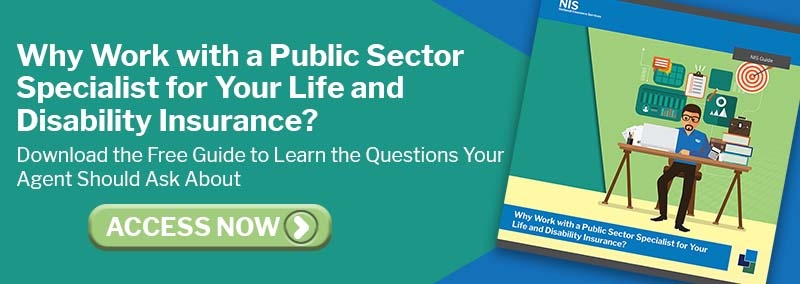3 minute read
Revised June 9, 2021
Sometimes employers made need to switch their disability or life insurance carriers to get a better plan design, rates, or customer service. To ensure that no employee falls through the cracks during the transition, consider:
- Does the new plan match the material benefits of the old plan?
- Does the new policy mirror your employee contract language?
- Does it correspond with the way you administer benefits?
While these things may sound basic, the unique nature of public sector benefits requires some detailed detective work. Review both your old and new policy side by side or ask your agent to do so. Even subtle differences in benefit levels or definitions of terms such as disability can significantly affect claims. Here are some things to pay attention to when comparing policies:
Life Insurance Reduction Schedule
Reduction schedules are often built into policies to keep lower overall claims and keep costs down. If your plan has a reduction schedule, it will have language that states when an employee reaches a certain age (age 65, 70, etc.), their life insurance coverage amount may reduce by a certain stated percentage. As the employee ages, the amount of coverage could reduce even further (example: benefits will reduce to 65% upon attainment of age 65, will reduce to 50% upon attainment of age 70, and terminates upon retirement). If you don’t have a reduction schedule, coverage will typically terminate when an employee retires/resigns. Does the policy’s life insurance reduction schedule match your employment contracts/agreements? If it doesn’t, ask your agent what they recommend.
Leave of Absence Language
Check your new policy’s leave of absence language. Does it match your current practices regarding leaves? Do you allow employees on approved leave to continue benefits? Do you limit how long an employee can be out on leave? Do you have different requirements for each type of leave (paid, unpaid, sabbatical, etc.)? Comparing this information will tell you if your employees are covered if they are not actively at work due to a leave of absence.
Pre-Existing Condition Exclusions - Disability
Many carriers add a pre-existing (pre-ex) conditions limitation to their plan. A pre-existing condition is a medical condition or illness that an employee was treated for before they obtained insurance. Coverage due to a pre-existing condition may be limited or excluded for a certain period of time within a policy.
If you don’t currently have this exclusion, and your new policy does, you will want to ensure the exclusion isn’t in conflict with your bargaining agreement (if any) or the employer’s intent.
Disability/Life Limitations
Check your life/disability insurance limitations, if they are different from your previous carrier, talk with your agent about them. A limitation is any type of injury or illness that has limited coverage or no coverage. A disability insurance policy may limit coverage for things like mental/nervous disabilities, drug/alcohol related disabilities, or self-reported symptoms (fibromyalgia). A voluntary life insurance limitation could exclude coverage in cases of suicide.
Actively at Work Employees
Make a complete list of all employees who are not actively at work. Actively at work means an employee is performing all the normal duties of their job at the usual place of business. Those who are not actively at work may include those who are out on waiver or premium, out on disability, or out on a leave or sabbatical.
Most insurance carriers for life insurance require employers to complete an “Actively at Work Statement” – a list of your non-active employees and provide detailed information. This statement can be useful to determine which carrier will cover these employees for life insurance after the transition. It also ensures that no one is missed. Employers should check with both their current and new carrier to ensure that these employees are covered by one or the other. Note that for disability insurance, it is standard that employees not Actively at Work will not be covered under a new carrier until they have returned to work and meet all the eligibility requirements.
For more information on changing insurance carriers, contact your NIS Representative.

